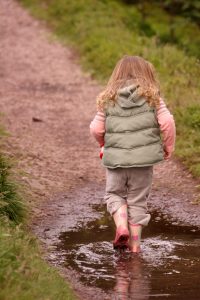- Free Consultation: 760-571-5500 Tap Here to Call Us
Learning More About Dry Drowning and Secondary Drowning

Most San Diego residents do not have to wait until summer to enjoy trips to the beach or afternoons by the pool. However, given that most children are on vacation during the summer months and likely will be engaging in recreational activities in and around the water, it is important to think about water safety and ways of preventing serious and even fatal child injuries. Parents in California should understand the risks and symptoms of both dry drowning and secondary drowning, and how to react in the event that an accident happens. According to a recent article in the Huffington Post, dry drowning and secondary drowning are not especially well understood, and it is important to learn more about how these incidents can occur.
Risks Continue After a Child Leaves the Water One of the scariest features of both dry drowning and secondary drowning is that the child typically appears to be safe after being pulled from the water, only to exhibit life-threatening symptoms at a later point. Dry drowning is a little bit different from secondary drowning in terms of the timing. To better understand the symptoms of each, we should take a closer look at what each type of drowning entails.
What is dry drowning? As the article explains, it is a form of drowning that occurs when a child swallows water, and that water irritates his or her throat and windpipes to the extent that the child has difficulty breathing. Dry drowning typically takes place within an hour following a near-drowning experience. Parents should see signs or symptoms of dry drowning within an hour—and perhaps much sooner—of swallowing or inhaling water.
Without immediate medical attention, a dry drowning incident can quickly result in death. It is important for parents to recognize that dry drowning need not occur following a near-drowning experience in a pool or in the ocean. Even a small puddle of water can lead to a dry drowning incident. For example, if a child slips and falls outside and lands in a small amount of water, that can be enough to cause a life-threatening situation. Bathtubs and showers, too, can lead to a dry drowning incident.
Secondary drowning is a bit different in that it can take many hours—sometimes up to 24 hours—for symptoms to appear. While dry drowning does not necessarily result in water in a child’s lungs, secondary drowning happens when a child swallows or inhales water, and it enters the lungs. If water enters a child’s lungs, the lungs can collapse, making it impossible for the child to breathe.
This type of drowning is not always accompanied by a clearly dangerous situation in the water. In other words, a parent might not see his or her child flailing in the water before a secondary drowning accident occurs. Incidents that can lead to secondary drowning often do not seem especially serious at the time. As such, if your child displays any signs or symptoms, take your child to a health care provider immediately.
Signs and Symptoms of Dry Drowning and Secondary Drowning The key to avoiding a dry drowning or secondary drowning fatality is to seek immediate medical attention if your child displays signs or symptoms. According to WebMD, the following are signs and symptoms of dry drowning and secondary drowning:
- Coughing;
Extreme fatigue;
Chest pain; and
Difficulty breathing.
If your child sustained injuries in a drowning incident caused by another person’s negligence, an experienced San Diego personal injury lawyer can help. Contact the Walton Law Firm today to discuss your case.
See Related Blog Posts: Link Between Drowning Accidents and California Drought Summer Safety and Drowning Accidents
(photo courtesy of Scott Liddell)









